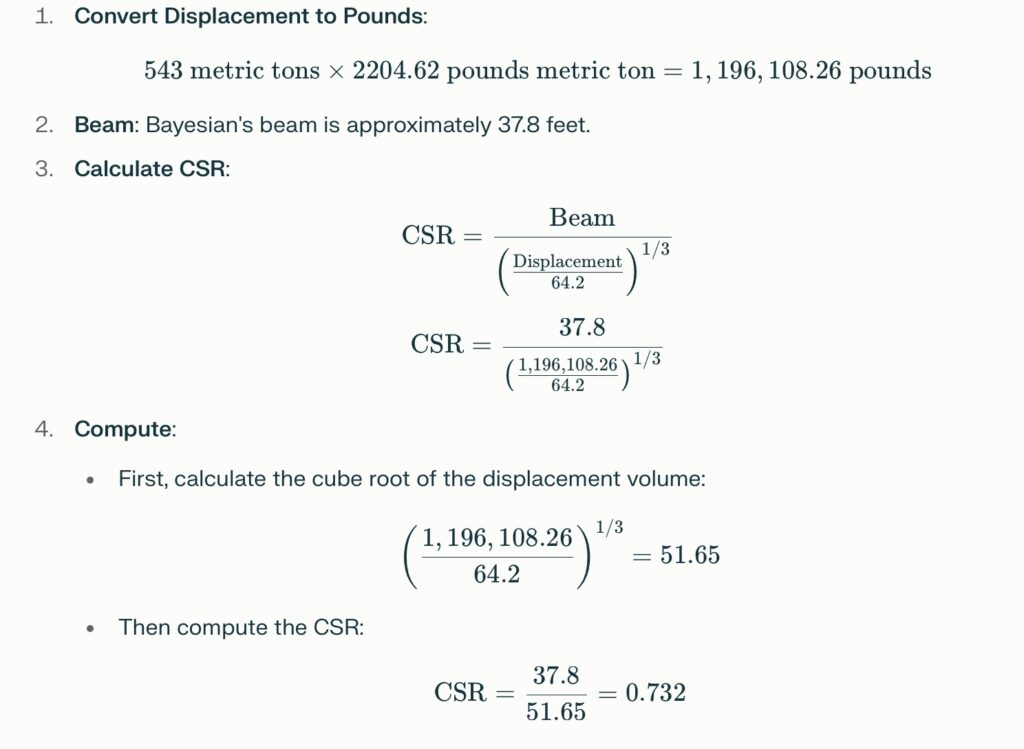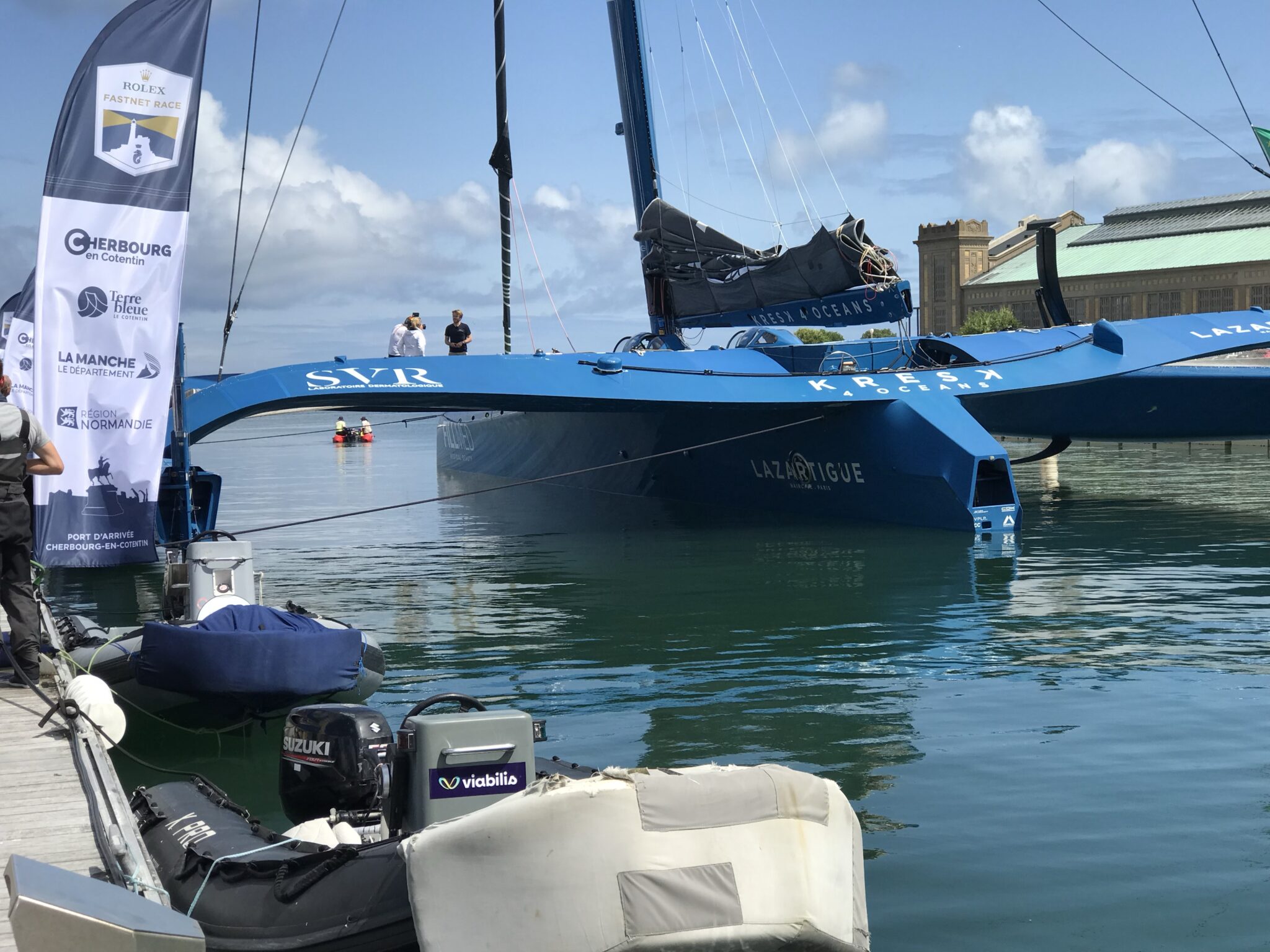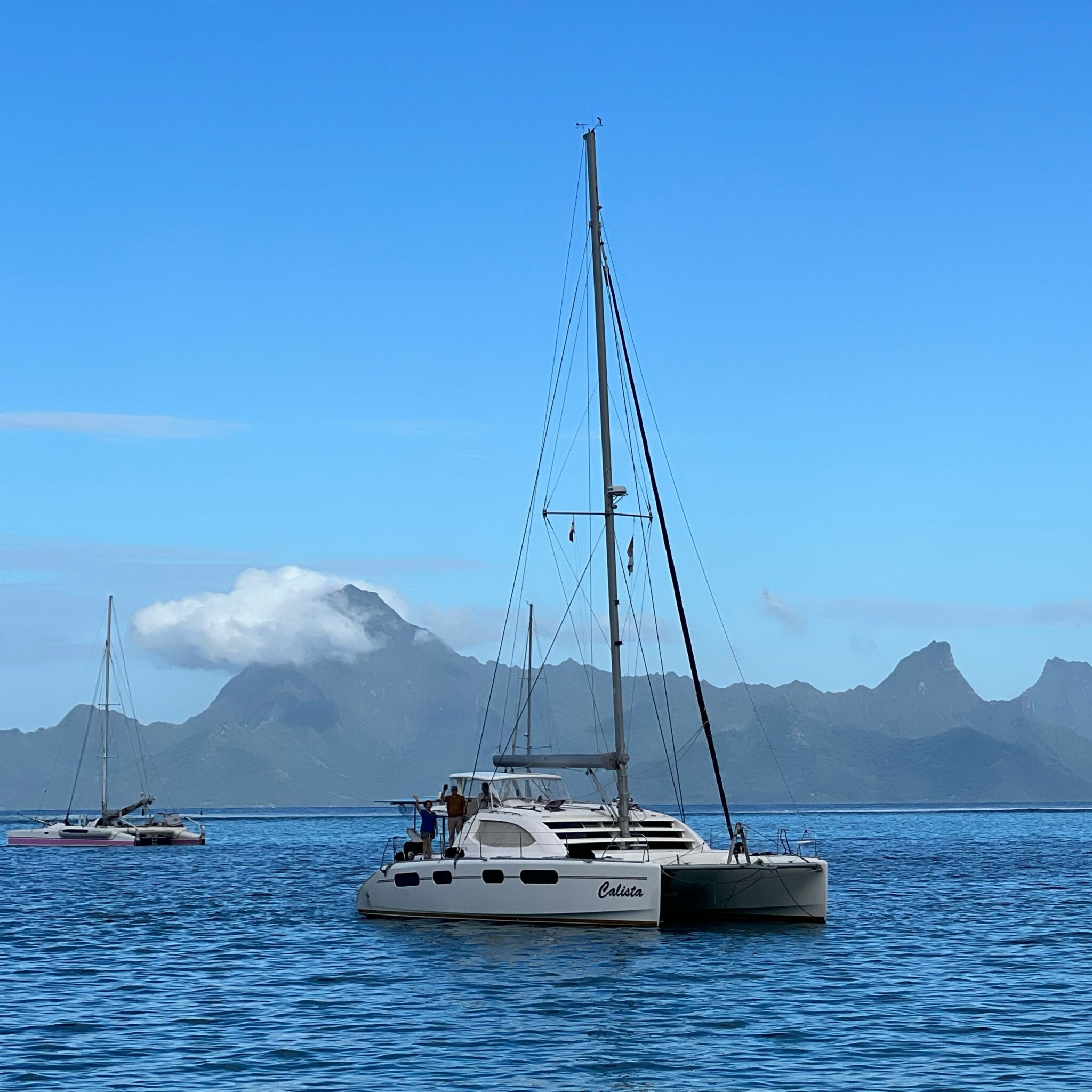The sinking of the superyacht Bayesian has raised several questions about yacht design, safety features, and crew decisions that may have contributed to its rapid sinking.
The British-flagged yacht had 22 people on board, including 12 passengers and 10 crew members, when it was struck by a severe storm. The storm created waterspouts in the area.

At the time of the storm, the yacht was anchored near the small fishing village of Porticello, east of Palermo. Witnesses reported that the ship’s 72-meter mast broke in half, causing the vessel to lose balance and sink. The yacht disappeared beneath the water at approximately 5 a.m. local time.
Based on the available information, here are the key points regarding the incident and its aftermath:
Design Features and Potential Contributors to Sinking
Several design elements and circumstances are thought to have potentially contributed to Bayesian’s rapid sinking:
Tall Mast: The exceptionally tall mast may have affected the yacht’s stability1. Some experts suggest it could have increased vulnerability in storm conditions. Though this is debated3, the following should be noted:
The practice of cutting down masts to prevent capsize was common in the age of sail:
- 1. In extreme weather conditions, sailors would sometimes cut away masts to reduce the risk of capsizing.
- 2. This practice was a last-resort measure to improve stability by lowering the center of gravity and reducing wind pressure on the ship.
- 3. In Bayesian’s case, her tall mast has been mentioned as a potential contributing factor to her instability. However, there’s no indication that cutting the mast or otherwise reducing weight aloft was considered or possible.
The mast height was 72 meters (236 feet), the tallest aluminum mast in the world at the time of construction. Tall masts are commonly believed to give better pointing performance (see Tall Masts Were Desirable. The superyacht Bayesian had a total sail area of approximately 1,500 square meters (16,146 square feet). The sails were designed to be stowed aloft, utilizing an advanced furling system typical of Perini Navi yachts, which allows for efficient sail management and deployment. This system is part of the yacht’s sophisticated rigging.

The Lady Washington was built for duty on the east coast of the Americas as a tall masted sloop and was converted to a split rig (two relatively shorter masts) in 1787, about 20 years later. Ted Brewer has discovered that the vessel was built in Essex, Connecticut and crossed the Atlantic at least once bringing Irish immigrants to the New World. She was later sailed to Hong Kong where the shorter masts and easier to handle sails were installed. The Lady Washington was the first US built vessel to circumnavigate the globe.
The controversial capsize screening ratio (CSR) is relevant.
To calculate the capsize screening ratio (CSR) for the superyacht Bayesian, we need its beam and displacement. While the exact displacement in pounds isn’t provided, we know the displacement is 543 metric tons. Here’s a graphic of the calculation.

The calculated CSR of approximately 0.732 is well below the threshold of 2.0, indicating that Bayesian would be considered stable and suitable for offshore sailing based on this metric alone (assuming the math was done correctly).
The 2.0 threshold emerged after the 1979 Fastnet Race disaster to help assess a boat’s seaworthiness for ocean conditions6. However, it’s important to note that this formula doesn’t account for factors like hull shape or ballast location, which also significantly affect stability36. It became controversial in that multihulls could not be considered ocean worthy by the CSR under 2.0 rule. indicating a lower likelihood of capsizing23. It is also worth noting that adding excessive ballast impacts the ratio.
The capsize risk ratio, also known as the capsize screening formula or capsize ratio, is a simplified method used to assess a sailboat’s relative risk of capsizing. Here’s how it compares between different types of yachts:
Monohull Sailboats:

- For monohulls, a capsize ratio under 2.0 is generally considered acceptable for offshore sailing.
- Typical bluewater cruising monohulls often have ratios between 1.5 and 1.9.
- Lighter, more performance-oriented monohulls may have higher ratios, sometimes exceeding 2.0.
Catamarans:

- Catamarans typically have lower capsize ratios than monohulls due to their wider beam.
- However, this formula is less applicable to catamarans as it doesn’t account for their unique stability characteristics.
- Catamarans have high initial stability but can become unstable more quickly at higher angles of heel.
Trimarans:

- Like catamarans, trimarans generally have lower capsize ratios than monohulls.
- Trimarans are often more resistant to wind-induced capsize than catamarans due to their greater beam.
- However, they can be more susceptible to wave-induced capsize, especially when sailing at high speeds.
It’s important to note that the capsize ratio is a simplified metric and doesn’t account for many factors that influence a yacht’s actual stability and safety at sea. For multihulls in particular, other factors are often more relevant:
- For catamarans, the angle of vanishing stability (AVS) is a more important measure. Most modern cruising catamarans have an AVS around 110-120 degrees.
- Trimarans often have even higher AVS, sometimes exceeding 140 degrees.
- Multihulls generally have a different stability curve compared to monohulls. Their maximum righting moment occurs at a much lower angle of heel (around 10 degrees for catamarans) compared to monohulls (typically around 60-70 degrees).
In practice, multihull safety depends greatly on design features beyond simple ratios:
- Hull shape and volume distribution
- Bridgedeck clearance
- Rig design and sail plan
- Weight distribution
- Presence of watertight compartments
Additionally, seamanship plays a crucial role in multihull safety. Proper sail management, understanding weather conditions, and using appropriate heavy weather tactics are essential for safe multihull sailing.While the capsize ratio can provide a quick initial assessment for monohulls, it’s not as useful for comparing the capsize risk between different types of yachts, especially when comparing monohulls to multihulls. More comprehensive stability assessments and real-world performance characteristics are needed for a true comparison of capsize risk across different yacht types.
Retractable Keel: Bayesian was designed with a retractable keel. If the keel was raised during the incident, it could have significantly reduced the yacht’s stability34. Divers found it in the raised position. However, even if lowered the vessel shouldn’t have been considered an ocean going vessel by downflooding angle and Angle of Vanishing Stability which are discussed below.
Keels have been ripped from hulls causing rapid capsizes and sinking and since Bayesian sank in 16 minutes my thinking is that – retracted or not – the keel cracked open the hull from excessive force while capsizing. An extended keel would have been worse than a retracted one by my theory. Titanic did not capsize, it flooded and after 2.5 hours sank. Perhaps it was the same with Bayesian – except it took only 16 minutes.

Ventilation Ducts: A former captain of Bayesian mentioned that ventilation ducts on the yacht were vulnerable to downflooding at angles over 40-45 degrees of heel1.
The downflooding angle is the heel angle at which water can enter a vessel through openings, affecting its buoyancy and stability and requiring crew to begin dewatering processes. It is crucial for ensuring that a yacht can withstand heeling without taking on water.

The low downflooding angle indicates that Bayesian may have had a higher risk of capsizing compared to other yachts of similar size and purpose because of pumping that would be necessary after exceeding that angle.
The downflooding angle is a critical measure of a yacht’s stability, indicating the angle of heel at which water can enter the vessel through openings. Here are typical downflooding angles for modern sailing yachts:
- Offshore Boats: Generally, the downflooding angle should be over 110 degrees for offshore boats to ensure safety in rough conditions2.
- Large Yachts: For very large yachts, the downflooding angle tends to be around 60 degrees, which may be influenced by specific code requirements5.
- Best Practices: A downflooding angle of more than 65 degrees is regarded as best practice and is achievable for many vessels3.
These angles help ensure that yachts can handle significant heeling without taking on water, thereby maintaining stability and safety at sea. So while passing the capsize screening ratio criteria, Bayesian was poorly designed for offshore use by downflooding angle standards – even for very large yachts – but that deficiency was probably addressed with provisions for pumping.
Low-Positioned Cockpits and Heavy Salon Door: These features were identified by a naval architect as possible ingress points for downflooding1.
Wide Beam: An oceanographer suggested that the wide beam might have contributed to the wind pinning the yacht1. Wide Beam is typical in multi-hulled vessels and designs with wide beam have become fashionable in monohulls in recent years.

The idea here is that, after the vessel was knocked down on its side by wind and wave action, it was held there by wind using the wide bottom as a lever. This provided more time for water ingress through vents and hatches. This idea is supported by observations involving multihulls and a metric called Angle of Vanishing Stability (AVS) has been developed to judge wide designs.
Both AVS and downflooding angles are essential for determining a yacht’s ocean-worthiness, with AVS providing insight into capsize resistance and the downflooding angle ensuring structural integrity against water ingress.

- The Angle of Vanishing Stability (AVS) is a critical measure in assessing a yacht’s seaworthiness. It represents the angle of heel beyond which a yacht will not return to an upright position on its own and is considered to be “capsized.” A higher AVS indicates greater stability and resistance to capsizing, making it a crucial factor for ocean-going vessels. For offshore yachts, an AVS of at least 120 degrees is typically desired, with 140 degrees or more being ideal for bluewater boats24. Bayesian with at best 90 degrees doesn’t meet that standard.
- In comparison, the downflooding angle is the angle at which water can enter the vessel through openings like hatches or vents, leading to potential flooding. A higher downflooding angle indicates better resistance to taking on water during heavy heeling. Modern regulations often require a downflooding angle of at least 40 degrees, with 65 degrees or more considered best practice2. Bayesian with at best 45 degrees doesn’t meet the best practice standard.

The superyacht Bayesian, built by Perini Navi and launched in 2008, has the following specifications:
• Length: 56 meters (184 feet)
• Beam: 11.51 meters (37’9”)
• Draft: 4 meters (13 feet) with a retractable keel extending to 10 meters (33 feet)
• Gross Tonnage: 473 GT
• Mast Height: 72 meters (236 feet), the tallest aluminum mast in the world at the time of construction
• Hull and Superstructure: Aluminum
• Top Speed: 15.6 knots
• Cruising Speed: 12.5 knots
• Range: 3,600 nautical miles at 13 knots
• Accommodation: Up to 12 guests in 6 cabins, with a crew of up to 10
Bayesian features a Japanese Zen-inspired interior designed by Rémi Tessier and naval architecture by Ron Holland Design. The yacht’s design includes a sloop rig with a custom ‘giga-winch’ for handling the tall mast and sails.
Bayesian was noted for its technical brilliance and first-class design, combining luxury with performance.
Crew and Captain Decisions
Several factors related to crew decisions are being investigated:
Keel Position: Investigators are looking into whether the retractable keel was up, down, or in an intermediate position4.
Hatch Closures: There’s speculation that open hatches or windows might have allowed water to enter rapidly34. The superyacht Bayesian did have a dinghy garage at her stern, which could have contributed to flooding during the sinking.
A dinghy garage, typically located at the stern of a yacht, is designed to house and launch smaller boats or tenders. If not properly sealed, this area can become a point of vulnerability during severe weather conditions or if the yacht is heeled significantly. Potential Contribution to Flooding:
- 1. Water Ingress: If the garage door or hatches were not fully watertight, water could enter the yacht through this area during rough seas or if the stern was submerged.
- 2. Structural Weakness: The additional openings and structural modifications required for a dinghy garage might compromise the hull’s integrity in extreme conditions, increasing the risk of water ingress.
- 3. Weight Distribution: The presence of a dinghy and equipment in the garage could affect the yacht’s balance and stability, especially if water starts to flood this compartment.
- These factors could have exacerbated the situation when Bayesian encountered severe weather, leading to rapid flooding and contributing to its sinking.

Weather Preparedness: Questions have been raised about the crew’s preparedness for the forecasted poor weather conditions4. It is known that adverse weather conditions, such as strong winds and high seas, can significantly impact a yacht’s stability and safety.
Engine and Facing the Wind: The CEO of the company that built the yacht suggested that, given the approaching storm, the crew should have started the engine, lowered the keel, and faced the wind1.
The “women and children first” protocol, also known as the Birkenhead drill, is a traditional code of conduct whereby the lives of women and children are to be saved first in a life-threatening situation at sea, typically when survival resources such as lifeboats are limited. However, it is important to note that there is no legal basis for this protocol in international maritime law. The concept was celebrated among Victorian and Edwardian commentators as a chivalric ideal, but it has no basis in maritime law1. Typically drills are required for passengers and guests so they know what to do in emergencies.
The crew and captain of the Bayesian were not tested for drugs or alcohol immediately after the sinking. Italian authorities stated that the crew was in shock and required treatment following the incident, which precluded immediate testing135. The investigation into the sinking is ongoing, focusing on potential human error and the yacht’s handling during severe weather conditions23.
The tragic sinking of the superyacht Bayesian resulted in the deaths of seven individuals.

Here are brief biographies and details about their roles on the yacht and where their bodies were found:
- Jonathan Bloomer: Chairman of Morgan Stanley International and former chairman of Autonomy Corporation. He was aboard as a guest and found in a cabin on the left side of the yacht, likely seeking refuge during the sinking14.
- Judy Bloomer: Wife of Jonathan Bloomer, she was also a guest on the yacht. Her body was found alongside her husband in a cabin14.
- Mike Lynch: Founder of Autonomy Corporation and Invoke Capital, Lynch was celebrating his recent acquittal from a U.S. fraud trial. He was found in a cabin, having likely sought an air pocket during the sinking14. In June, Mike Lynch was acquitted after a lengthy trial in the US on charges that he had fraudulently inflated the value of his company, Autonomy, before selling it to Hewlett Packard in 2011
- Hannah Lynch: Daughter of Mike Lynch. Her body was discovered in a separate cabin from her father, suggesting she may have been trying to find safety elsewhere on the yacht14.
- Christopher J. Morvillo: A partner at Clifford Chance US LLP and Mike Lynch’s lawyer. He was aboard as part of Lynch’s legal team and found in a cabin with his wife14.
- Neda Morvillo (née Nassiri): A jewelry designer and wife of Christopher Morvillo, she was also found in the same cabin as her husband14.
- Recaldo Thomas: The yacht’s chef, originally from Antigua, drowned and his body was recovered outside the vessel shortly after it sank24.
These individuals were part of a group celebrating aboard Bayesian when it encountered severe weather off the coast of Sicily, leading to its rapid sinking13.

Raising the Bayesian
The raising of the Bayesian yacht from the seabed near Sicily is a complex and costly operation. Here are the key details:
- Cost and Duration: The recovery is estimated to cost around €15 million and take six to eight weeks2.
- Operation Details: A substantial platform will be constructed and transported offshore to the site. Large cranes on this platform will gradually lift the yacht from a depth of 165 feet2.
- Challenges: The yacht’s aluminum mast, noted for its record height, must be severed and removed before raising. Care must be taken to prevent the yacht from disintegrating due to internal water pressure2.
- Expert Involvement: Nick Sloane, a renowned salvage engineer, has discussed potential strategies with Italian divers, although he has not been officially contacted for the operation2.
- Divers: The operation would require about 40 specialized divers according to Nick Sloan
- Purpose: Raising the yacht aims to provide investigators with vital clues about its rapid sinking during severe weather conditions2.
One diver fatality halted operations in May. On June 20 Bayesian was raised.

Vessels with Similar Features
Bayesian, as part of the Perini Navi 56-meter series, shares similar dimensions with its sister ships, although it is unique as a sloop rather than a ketch, which might slightly affect its LWL compared to two-masted designs.

In conclusion, the investigation into Bayesian’s sinking is ongoing, and experts are still debating the exact causes. The rapid sinking (within minutes) and the fact that a nearby vessel was unaffected suggest that multiple factors may have contributed to this “black swan event”3. The raising of the yacht, while expensive and time-consuming, may provide crucial answers to the questions surrounding this tragic incident.


